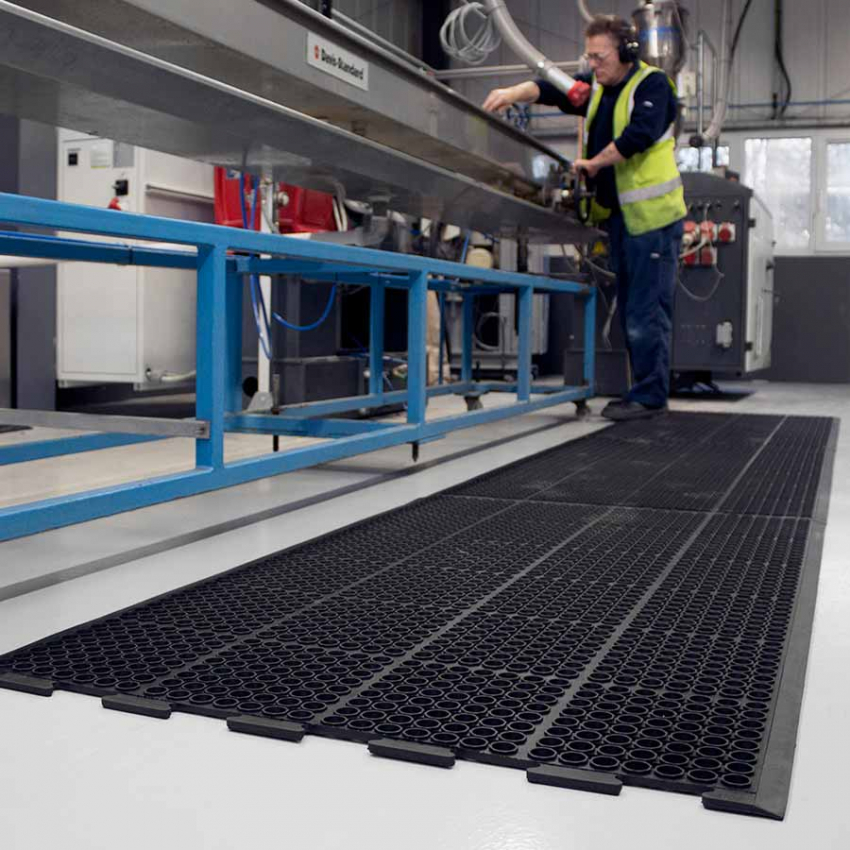















Reduces fatigue caused by standing at large workstations and exposed to oily products. Insulatesprofessionals from hard, cold floors, its perforations allowing excellent evacuation of liquids, leaving a dry surface . What's more,the circular-patterned surface provides better grip for shoes compared with entry-level anti-fatigue mats.
Available in standard sizes with all edges bevelled or in modular sections.
Natural rubber/nitrile compound offers enhanced resistance to mineral oils, aggressive machine coolants and animal fats and oils.
This product is suitable for oily, damp areas.
Ideal for most wet and dry industrial environments, offering excellent wet slip resistance . General industry, bars, gastronomy, areas around machine tools where chips are common. Suitable for use behind bars and other catering applications.
Loose-laid, interlocking tiles.
![]()
| HIGHDUTY |
Data sheet
| Format | Mat Slabs |
| Surface | natural rubber / 25% NBR (nitril) blend |
| Properties | Anti-fatigue Draining |
| Thickness | 12 mm |
| Weight | 9,2 kg |
| Resistant to chemicals | Yes |
| Maintenance / Cleaning | Pressure wash with a mild detergent or run through a commercial dishwasher |
| Environment | Oily environments Wetlands |
| Intensity of use | Intense |
| Wear index | 2/3 (Very good) |
| Anti-slip classification | R10 |
Industrial mats meet the needs of ergonomic workstations and employee well-being.
They prevent:
There are many uses for industrial mats:
Safety criteria: The mat must cover the entire workstation, be firmly attached to the floor, not shift or slide, and have bevelled edges to prevent falls.
Thickness and flexibility criteria: Contrary to what you might think, you shouldn't choose a very thick or very soft mat. The mat should have a certain elasticity, but still allow a comfortable standing position, without the user feeling slumped.
Environmental criteria :
Environmental hazard criteria : To establish more precise characteristics for a mat (antistatic properties or fire resistance etc...) we need to take into account the hazards present in the environment where the mat will be installed.
Where hazardous liquids are present in the working environment, the anti-slip properties and chemical resistance of industrial mats should be taken into account. The presence of openings on mats to allow the evacuation of fluids is essential.
Traffic criteria: We need to take into account the traffic that takes place on the equipment: how many workers can walk on it? How often, etc., in order to choose the most suitable mat.
Prevent the many problems associated with poor workstation ergonomics: RSI, static shock, bacterial proliferation, etc.
We offer a wide choice of industrial mats: on rolls, in standard sizes, made-to-measure or modular mats to suit all types of workstations.